Shelley pottery is probably best known for its fine bone china and ‘Art Deco’ fashionable tea ware, including the “dainty cup”. Shelley is currently very popular in the Asian market.
Potteries Auctions can identify and provide valuations on a wide range of Shelley pottery pieces.
Top Selling Shelley Items at Auction
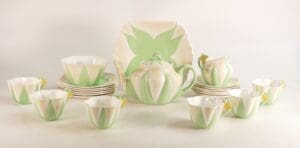
Shelley Dainty floral handle, pattern 1193/9 22 pieces
£1,150
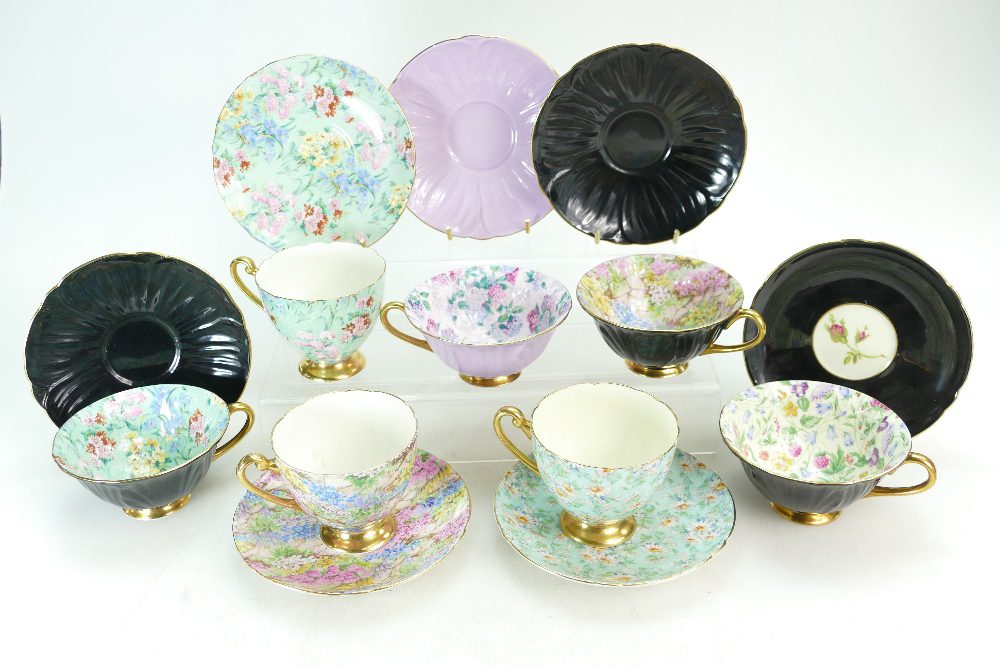
A collection of Shelley Chintz cups and saucers
£800
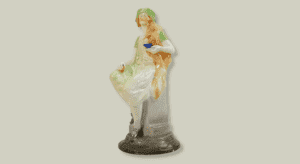
Shelley Art Deco figure of seated lady with teacup
£1,700
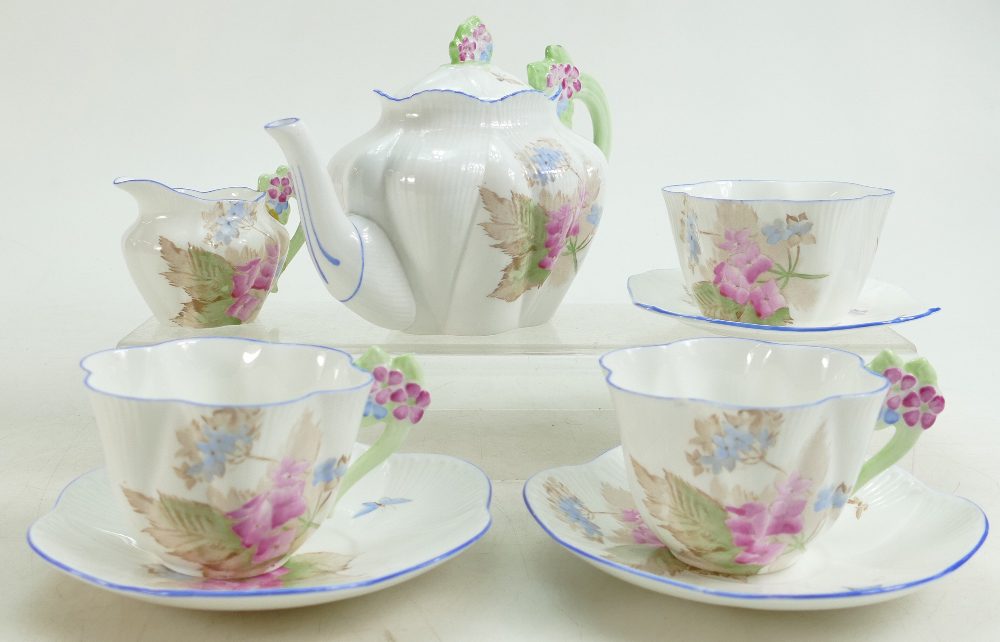
Shelley Dainty floral handled tea for two set in a Hydrangea pattern
£1,050
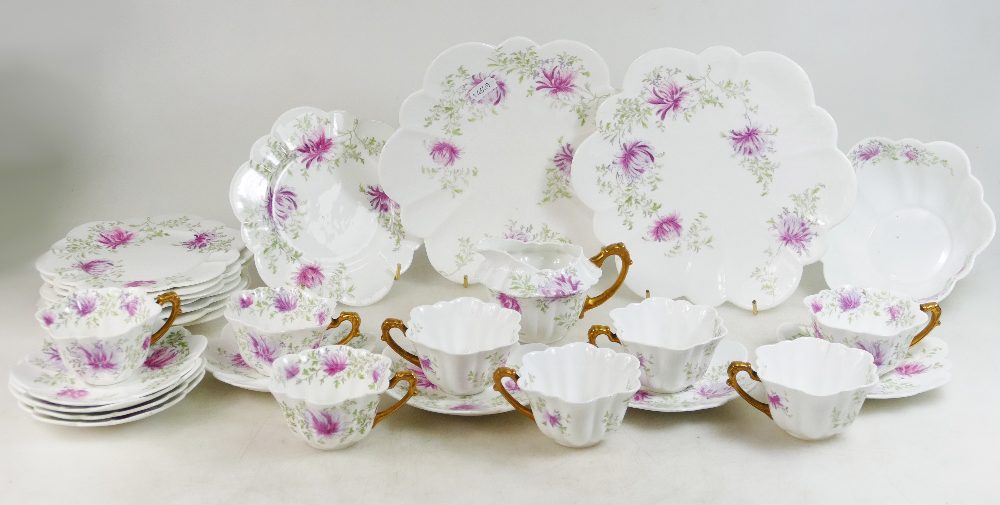
Wileman pre-Shelley, Foley China tea ware in the Snowdrop shape in a lilac floral design
£1,050
Got an interesting item?
Speak to one of our experts to find out the value of your pottery, antiques, jewellery, & collectables
Book a valuationWhether you are looking to buy or sell Shelley collectables or figures, the team of experts at Potteries Auctions can help you find the piece you are looking for, or value your items for sale. Request a call back if you are looking for a valuation and are seeking to sell some Shelley collector pieces at auction.
Shelley Pottery Facts
- Originally known as Wileman & Co, and The Foley Potteriews, Shelley Pottery manufactured china and earthenware.
- Shelley is well known for its fine bone china “Art Deco” ware of the inter-war years and post-war fashionable tea ware.
- Frederick Alfred Rhead joined the company in 1896 bringing a new set of skills to the company and introducing several ranges of china and earthenware such as the Intarsio range.
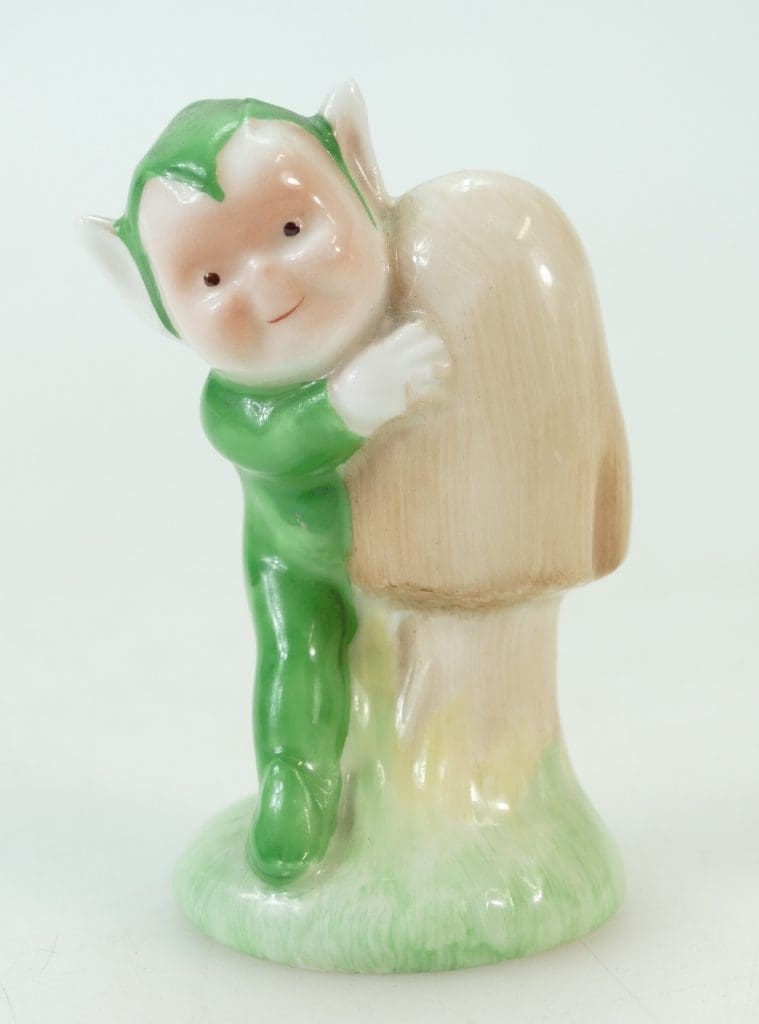
The History of Shelley Pottery
Shelley Potteries, situated in Staffordshire, was earlier known as Wileman & Co. which had also traded as The Foley Potteries. The first Shelley to join the company was Joseph Ball Shelley in 1862, and it remained a Shelley family business until 1966 ,when it was taken over by Allied English Potteries.
In 1881, Joseph Shelley’s son, Percy, joined the company. Joseph Shelley died in June 1896, leaving Percy in complete control of the company. Percy wanted to improve the company and, in 1896, he employed Rowland Morris. Morris was a ceramic designer and went on to design the ‘Dainty Cup’ shape. This shape became very popular, especially in the USA after World War II, and continued in production until the takeover in 1966.
The well-known Frederick Alfred Rhead was employed as the Arts Director in 1896. Rhead brought his own kind of skills to the company and introduced several ranges of China and earthenware, which enhanced the company’s reputation further. A decorative range of earthenware called “Intarsio” was one of Frederick Rhead’s major contributions to the pottery. He left the company in 1905.
Walter Slater then took over as Arts Director. The Slater name was another well-known family name in the pottery industry. Walter was an apprentice at Mintons in the late 1870s before moving to Doulton at Nile Street, Burslem, under the direction of his uncle John Slater.
In 1910, Percy Shelley decided to try to register the “Foley” name as its trade name, as the china was still marked Foley China. Another company that also used the “Foley” name on its backstamp objected and this resulted in a court case, where it was judged that Wileman’s could not have the exclusive claim to use the name. Percy Shelley changed the name to “Shelley”, which was placed within a shield. From 1910 to 1916 the words “Late Foley” were put over the top of the shield. Shelley’s placed advertisements advising the public of the changeover – one statement read:
‘The world-wide reputation of “Foley” China has caused many cheap imitations and in future, to protect the public, the real and genuine “Foley” China will always be indelibly marked “Shelley” China, a trademark which is a guarantee of the highest excellence.’
In 1911, the economic situation had started to improve, and Walter Slater was given more artistic freedom. He started to develop ornamental pottery and earthenware, as well as supervising the development of fine bone china. By 1914, Shelley had started to make a name for itself by producing dinnerware in china, as opposed to high quality earthenware. Within a few years it proved to be a great success.
The company was still called Wileman & Co, even though it had been controlled by the Shelley family for over fifty years, and on 1st January 1925 the Shelley name and trademark were registered.
The period of the mid-twenties until the start of World War II were Shelley’s most productive years. It was during this time that the Art Deco period was proving to be very successful with the various Deco shapes that were designed.
In the mid-twenties, Shelley broke with tradition and employed a well-known illustrator of the time, Hilda Cowham, to produce a range of nursery ware. Cowham designed a series called Playtime; the design was a simple representation of children’s activities. A second series of designs were produced in 1927, and in 1928 a tea set with a seaside theme was produced. The teapot was a bathing tent, the sugar bowl was a sea side bucket and the milk jug was in the shape of a shell with a seaweed handle.
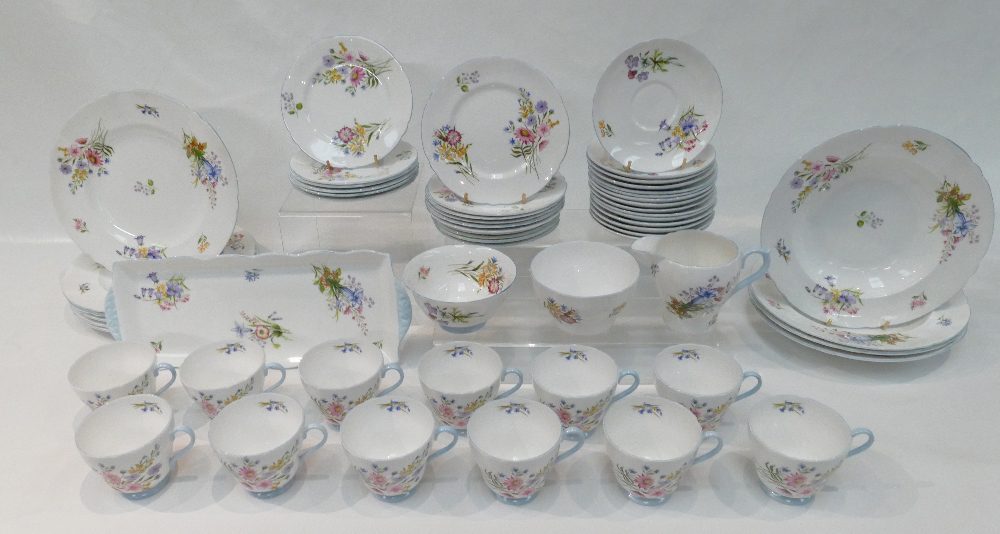
In 1926, a second well-known illustrator, Mabel Lucie Attwell, was introduced. Her first six designs portrayed scenes involving children, animals and small green elves in green suits – these were called ‘Boo Boos’. Mabel Lucie also produced a tea set, the teapot was in the shape of a mushroom house, the sugar bowl was a mushroom with the top cut off and the milk jug was a green ‘Boo Boo’ in a coy saluting pose.
While Shelley was now renowned for its Fine China, the factory also produced normal run-of-the-mill table ware, although items such as jelly moulds broke with tradition, as the shape was seen on the outside of the mould and not just on the inside.
The success of the company continued into the late thirties, until war was declared in September 1939. In June 1942, a complete ban on decorated ware was imposed on the UK market. Decorated ware was still being produced for export, as exports were a vital source of income for the UK. The war ended in 1945, but it was several years before the restrictions were fully lifted.
Shelley continued to hold its own on the pottery manufacturing side of the business, even though new technology was starting to change the face of the pottery industry and the old bottle kilns were becoming redundant. In May 1965, Shelley Potteries Ltd changed their name to Shelley China Ltd.
In June 1966, Shelley China Ltd became part of Allied English Potteries (A.E.P.). After fulfilling all outstanding orders, the production of Shelley ware ceased. The factory was named “Montrose Works”, and Royal Albert ware was produced at the works until the early eighties. Royal Doulton was also part of A.E.P., and as Royal Doulton was better known, the Royal Doulton name came to the fore. When the factory closed, most of the old buildings were demolished. All of the Shelley facilities are now gone. Only its history and its unmatched products carry on to this day.
Get In Touch
Potteries Auctions can collect items for auction from anywhere in the UK, and we can also handle large collections from all over the world, so just get in touch with us to discuss. We pride ourselves in our packing and shipping service to get goods out to purchasers, making it a perfect solution for buyers who can’t attend auctions in person.
Sign up for our newsletter
If you would like to receive advance notification of upcoming auctions and sale notifications, then please subscribe to either our text alerts or email newsletter via the buttons below.
